As with any major technology migration, there are challenges along the way, but in the end, the benefits far outweighed the difficulties.
If you’re considering migrating to Snowflake, here are some important things to keep in mind.
Data Volume and Performance
One of the key advantages of Snowflake is its ability to handle massive amounts of data.
In fact, Snowflake boasts a multi-cluster shared data architecture that allows for virtually unlimited scalability.
This means that no matter how much data you have or how fast your business grows, Snowflake can handle it without compromising performance.
Migration Experience
During our migration, we saw a significant increase in query speed compared to our previous on-premises solution.
Our reports ran faster, allowing us to make real-time decisions based on up-to-date information.
It was like going from driving a 10-year-old car to a brand-new sports car – the difference was night and day!
The performance improvement was so noticeable that it completely transformed our data analytics capabilities.
We were able to process and analyze large datasets in a fraction of the time it used to take.
Scalability
With Snowflake’s multi-cluster shared data architecture, we never had to worry about hitting any limits.
As our data volume grew, Snowflake automatically scaled to handle the increased workload.
This allowed us to focus on our business goals without having to constantly monitor and adjust our infrastructure.
The scalability of Snowflake was truly impressive.
We could easily add more compute resources as needed, ensuring that our performance remained consistent even as our data grew exponentially.
Data Integration and ETL
When moving to Snowflake, it’s crucial to consider how your existing data integration and ETL processes will be affected.
Snowflake provides seamless integration with popular tools such as Informatica, Talend, and Matillion, making the transition smoother.
However, it’s still important to evaluate whether any custom scripts or workflows need to be modified or rewritten.
Updating ETL Jobs
In our case, we had to update some of our ETL jobs to take advantage of Snowflake’s unique capabilities.
For example, we leveraged Snowflake’s built-in support for semi-structured data to simplify our JSON parsing process.
By doing so, we reduced the complexity of our ETL pipeline and improved overall efficiency.
Considerations for Custom Scripts
While Snowflake provides excellent integration with popular tools, it’s still important to evaluate whether any custom scripts or workflows need to be modified or rewritten.
This is because Snowflake may have different capabilities or requirements compared to your previous data warehouse solution.
It’s important to evaluate whether any custom scripts or workflows need to be modified or rewritten.
Improved Efficiency
By leveraging Snowflake’s unique capabilities, such as its built-in support for semi-structured data, we were able to simplify our ETL pipeline and improve overall efficiency.
This resulted in faster data processing and reduced complexity in our data integration processes.
Security and Compliance
With data breaches becoming more prevalent, security and compliance are top concerns for any organization.
Snowflake takes these matters seriously and provides robust security features to protect your data.
Separation of Compute and Storage
Snowflake’s architecture separates compute from storage, which means that sensitive data is never exposed to the compute resources.
Additionally, Snowflake encrypts data both at rest and in transit, ensuring end-to-end security.
This level of protection gave us peace of mind knowing that our data was safe from unauthorized access.
Industry Compliance
Furthermore, Snowflake is compliant with industry standards such as HIPAA, GDPR, and SOC 2 Type II. This compliance made it easier for us to meet regulatory requirements and maintain the trust of our customers.
Snowflake’s separation of compute and storage ensures that sensitive data is never exposed to compute resources.
Snowflake’s encryption of data at rest and in transit provides end-to-end security.
Cost Optimization
Migrating to Snowflake can lead to significant cost savings compared to traditional on-premises solutions.
With Snowflake’s pay-as-you-go pricing model, you only pay for what you use.
This flexibility allows you to scale up or down based on your needs, avoiding unnecessary expenses.
During our migration, we were able to reduce our infrastructure costs by 30% while improving performance.
Snowflake’s automatic scaling feature ensured that we had the right amount of computing power for each workload, optimizing resource utilization and minimizing costs.
To further optimize costs, consider using Snowflake’s built-in query optimization tools.
These tools analyze your queries and suggest improvements to make them run faster and consume fewer resources.
In conclusion, migrating to Snowflake can be a game-changer for your organization.
By considering factors such as data volume and performance, data integration and ETL, security and compliance, and cost optimization, you can ensure a smooth and successful transition.
Remember, just like driving a new car, there may be a learning curve, but the benefits far outweigh the initial challenges.
So buckle up and get ready for an exciting journey with Snowflake! If you’re considering Snowflake or any other data projects, contact us today and we can guide your journey.

